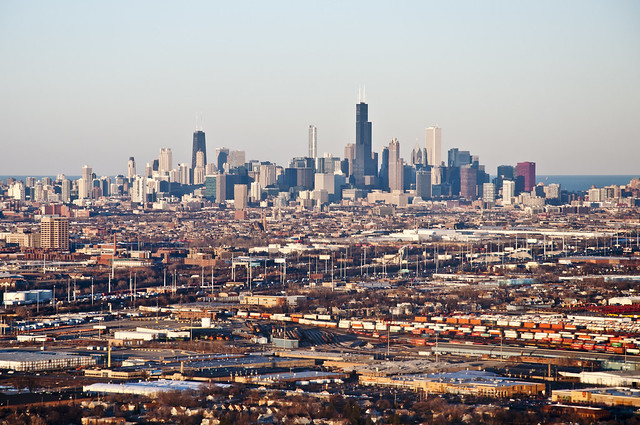Yep, a Telephoto Lens for Landscape Photography!
When photographers encounter the dreaded creative rut, it is often accompanied by feelings of panic or despair and an overwhelming drive to climb out of the merciless void that seems to have gobbled up all your creative energy.
You’ll do anything to get that old feeling back.

Without delving into a deep exploration of the framework of creative thinking, I will simply suggest that creative thinking (indeed, all thought) is largely the product of cognitive patterns.
Patterns are repetitive. Repetition can grow stale. In order to remain creative, you can’t continue to do things the same way all the time — you have to shake things up a little bit.
This shake-up doesn’t need to be drastic; all you really need to do is take on a different approach to a familiar activity. This is the first in a short series of posts that will encourage you to do just that — deviate ever so slightly from the norm as a means of recharging your photographic vision.
So, let’s kick things off with landscape photography. It’s a genre that brings to mind dramatic sweeping vistas — scenes that are captured with wide/ultra-wide angle lenses.
Indeed, just about any landscape related article you encounter online will fervently advise (rightfully so) readers to obtain a wide angle lens for such work. But since we’re talking about doing things differently, we’re going to consider the impact of using a telephoto lens for landscape photography.
Why Use a Telephoto Lens for Landscape Photography?
For the sake of this discussion, the answer to the question of why you would want to use a telephoto lens for landscape photography is simple:
Compression.
We’re all accustomed to the classic look of a wide angle landscape in which the scene is typically presented in an expansive manner; this is due not only to the wide field of view, but also the fact wide angle lenses amplify differences in the size of and distance between near and far objects.
Telephoto lenses, on the other hand, “shrink” or “compress” those differences, effectively bringing distant objects closer. Landscape shots made with a telephoto lens are particularly visually intriguing simply because they offer a different look at a scene.
When Would I Use a Telephoto Lens for Landscapes?
There is no wrong time to use a longer focal length for your landscape work; you can use a telephoto lens exclusively if that makes you happy. But due to particular optical features associated with telephoto lenses, you may find that certain situations are a bit more suited to the long lens approach.
-
When You Need to Avoid Distractions
At some point, you will surely encounter a scene that has potential but is marred by distracting elements of some kind. A wide angle lens would force you to shoot the whole scene (of course, you could crop out the unwanted section in post).
But with a telephoto lens, you can organically compose and frame the scene to exclude the offending elements.
-
When You Want to Highlight Details
Being able to “zoom in” on a scene also allows you to extract details the would otherwise be swallowed up in the expanse. Using a telephoto lens for landscape photography, you can easily incorporate:
- Patterns,
- Textures,
- Layers and Shapes into your landscape images.
-
When a Scene is too Big
When you encounter a vast open scene, it’s perfectly natural to feel inclined to capture as much of it as possible, but sometimes a scene is so expansive that it can get lost in a wide field of view.
A telephoto lens will help you break the scene up and create a more effective composition.
-
When you Want to Combine Near and Far
I’m sure you’ve seen those beautiful night shots with a full moon apparently hovering just behind a mountain peak or over a skyscraper. A telephoto lens is key in creating this look, as compression will bring the moon closer to the foreground.
Summary
There’s really not much to it; all you’re doing is taking an unconventional route to landscape photography by using a different lens/focal length. Which focal length should you use?
That’s totally up to you. If you have a 70-200mm, you can make it work; same goes for an 85mm lens or 135mm lens. It will depend on your surroundings and what looking you’re trying to achieve.
The bottom line is that this small change can ultimately have an extraordinary impact on your creative process.
Grab Some More of My Telephoto Tips HERE
Next time we’ll look at a way to change up your portrait photography a bit.
Telephoto Lens for Landscape Photography – Top Takeaways
- Using a telephoto lens for landscape photography will enable you to add something called “compression” to your images, where you can effectively bring distant objects closer.
- What's great is you can be selective about any unwanted objects in your scene – this way it doesn't have to mean ages at the computer sorting it all out in post.
- By breaking up a vast and expansive scene, it means you can add some real creativity to your images! Thinking outside the box.
Further Resources
- 7 Composition Tips That Will Skyrocket Your Landscape Photography by Lightstalking
- 10 Tips for Great Telephoto Photography by DPS
- How to Get Great Flower Photographs with a Telephoto Lens by Sheen Watkins
Further Learning
We're talking Landscape and want some ground-breaking Landscape techniques?
Ok, this guide by Kent Dufault will really sort you out then: The Complete Landscape Photography Guide.










1 Comment
I’ve been doing this for years, the 100-400 makes a great LS lens. ANY lens makes a great LS lens. It’s up to you to make it so.